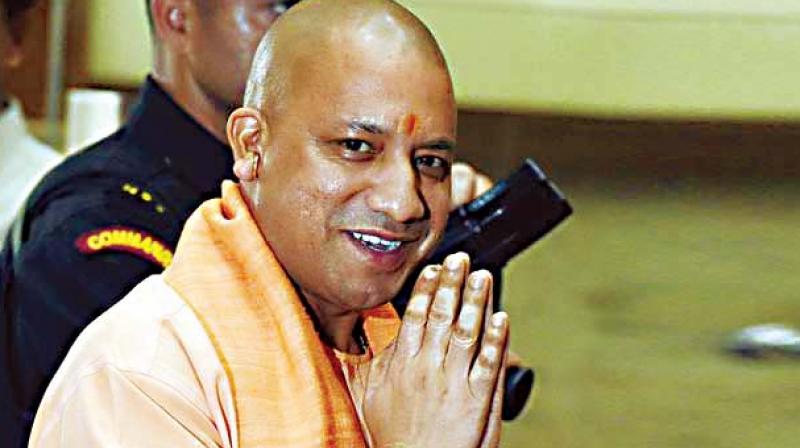View from Pakistan: A distorted version of faith makes us blind to truth, beauty
The Yogi was the chief priest of the main Hindu temple at Gorakhpur, so one would expect his worldview to be a bit limited.

Karachi: When Yogi Adityanath, chief minister of the Indian state of Uttar Pradesh, wanted to celebrate six months of the BJP government, what did he decide to do? According to a news report, he dropped the Taj Mahal from Uttar Pradesh’s list of tourist attractions. This is akin to Paris deleting the Eiffel Tower from its tourist brochures, or New York downplaying the Empire State Building. So why downgrade the importance of this sublime expression of love built by Emperor Shah Jahan in memory of his wife Mumtaz Mahal? Because it “does not represent Indian ethos”, according to the Yogi. Excuse me? I thought India was a syncretic place where different cultures, faiths and people were absorbed to produce a rich and vibrant civilisation. I might have been right once, but not in Narendra Modi’s India where the notion of a monolithic Hindu nationalism has taken root. Now, foreign NGOs, Pakistani theatre groups and iconic artists like the late M.F. Hussain have no place in this vast country of over a billion people. Yogi Adityanath has decided to give visiting dignitaries gifts of copies of the Gita and the Ramayana instead of the traditional miniature replicas of the Taj. No offence, but speaking for myself, I would prefer the Taj replica.
The Yogi was the chief priest of the main Hindu temple at Gorakhpur, so one would expect his worldview to be a bit limited. And to be fair, he’s not the first official to downplay the Muslim contribution to Indian culture. I was in Mumbai around 12 years ago, and visited the old Prince of Wales museum, or, as it is now called, the Chhatraparti Shivaji Maharaj Vastu Sangrahalaya. Inside, I found a vast display of historical objects, but oddly, no sign of any Mughal artefact. Indeed, somebody unfamiliar with the history of the subcontinent could be excused for thinking that there never had been a Muslim presence of any kind in India. Authoritarian states can erase or rewrite inconvenient chapters of their history. Thus, after Leon Trotsky had been exiled and made a non-person, all photos of the revolutionary communist leadership were issued without his image. A similar fate awaited Mao’s comrades who had fallen out of favour.
Insecure states, too, have a problem with uncomfortable historical events that run counter to the official narrative they are trying to promote. Thus, as India moves away from its tolerant, secular foundations laid by Nehru, a new, stirring ideology of a muscular Hindutva is replacing it. For its proponents, it is distinctly problematic to accept the centuries of Muslim rule that preceded the British Raj. Thus the constant attempts to airbrush the role Muslims played in India.
Pakistan, too, suffers from a variation on this theme. In a search for identity, it soon decided that the new state was an extension of the Arab Middle East, rather than a part of the subcontinent. The official version of Urdu was shorn of its sizeable component of Hindi words, and much of our Hindu past was ignored. Our schoolbooks reflect a warped version of history that now begins with the arrival of Islam. Thousands of years of rich, pre-Islamic civilisations that rose and fell by the Indus are neglected.
Successful and secure states take pride in their past, and research it diligently. Any discoveries that extend their history further back in time are celebrated. Yet we in Pakistan are so fixated by faith that we regard any pre-Islamic finds with the same suspicion we would accord a newly discovered time bomb. I still recall a bizarre experience when I was a newly appointed joint secretary in the culture ministry: I received a call from the Japanese embassy, and an official asked me when we would open the Quranic gallery at the National Museum in Karachi. Not having a clue, I promised to call him back. When I asked the director general of the archaeology department, his reply flabbergasted me. Apparently, the Japanese had flown out experts to design a special display area on the ground floor to exhibit the museum’s collection of old, exquisitely illuminated copies of the Holy Book. But local clerics had objected to their display below a floor that housed ancient Gandhara statues.
This is one small example of how ideology and a distorted version of faith can make us blind to truth and beauty. Sadly, the rise of ignorance and the retreat of reason in Pakistan is now being mirrored across the border. There is little difference between a Hindu being lynched here for alleged blasphemy, and a Muslim in India being killed on the charge of eating beef.One kind of extremism feeds off the other. When a literal understanding of religious texts replaces the search for their underlying symbolism, we end up with a list of do’s and don’ts.
By arrangement with Dawn

